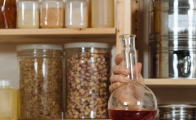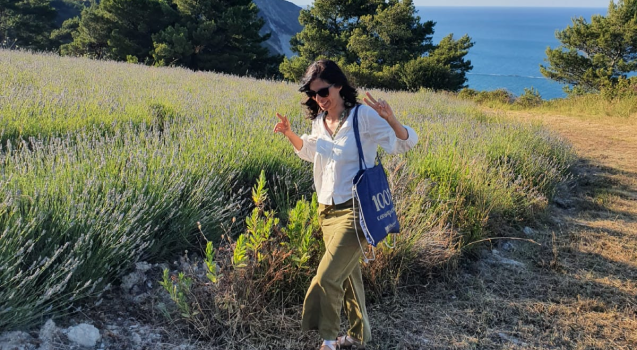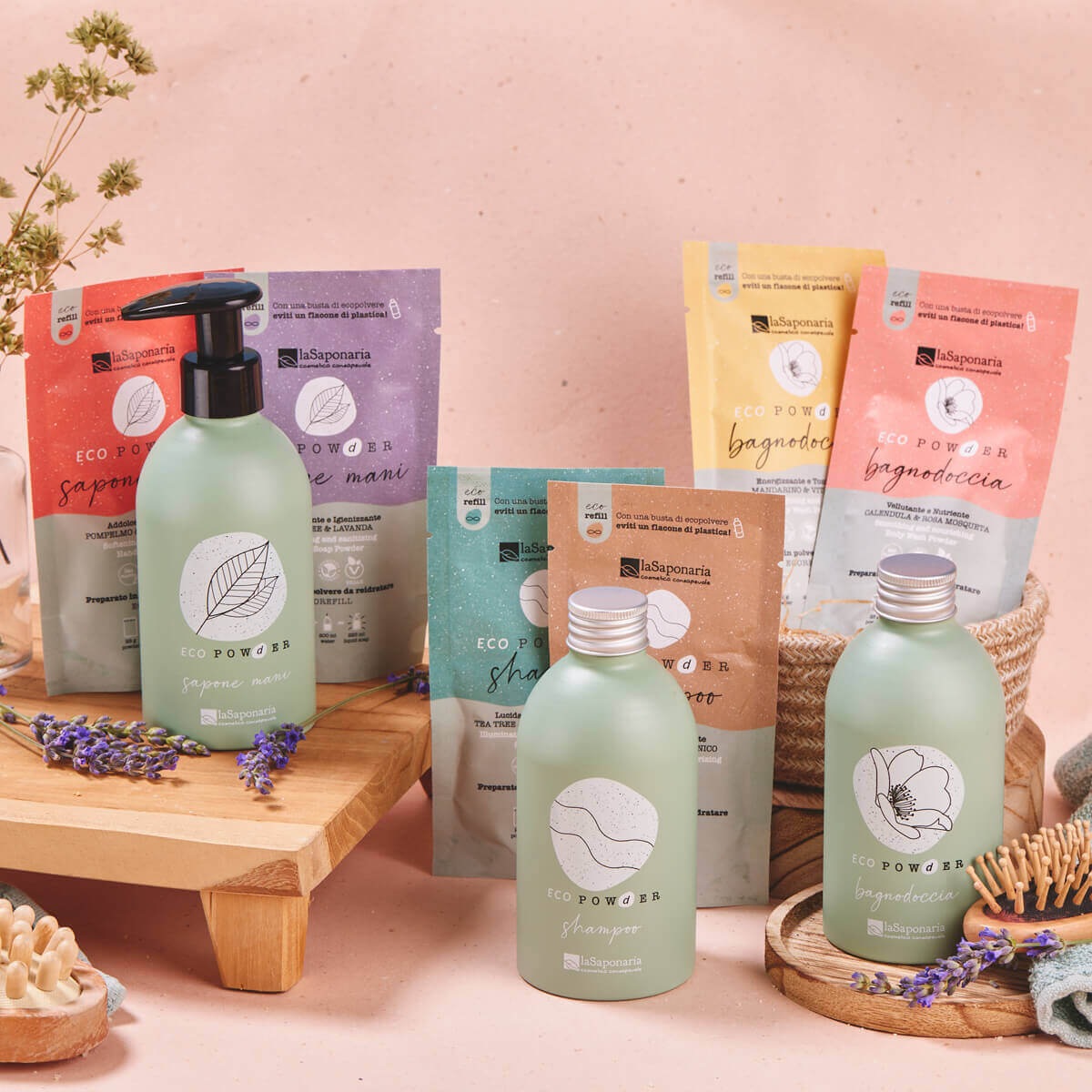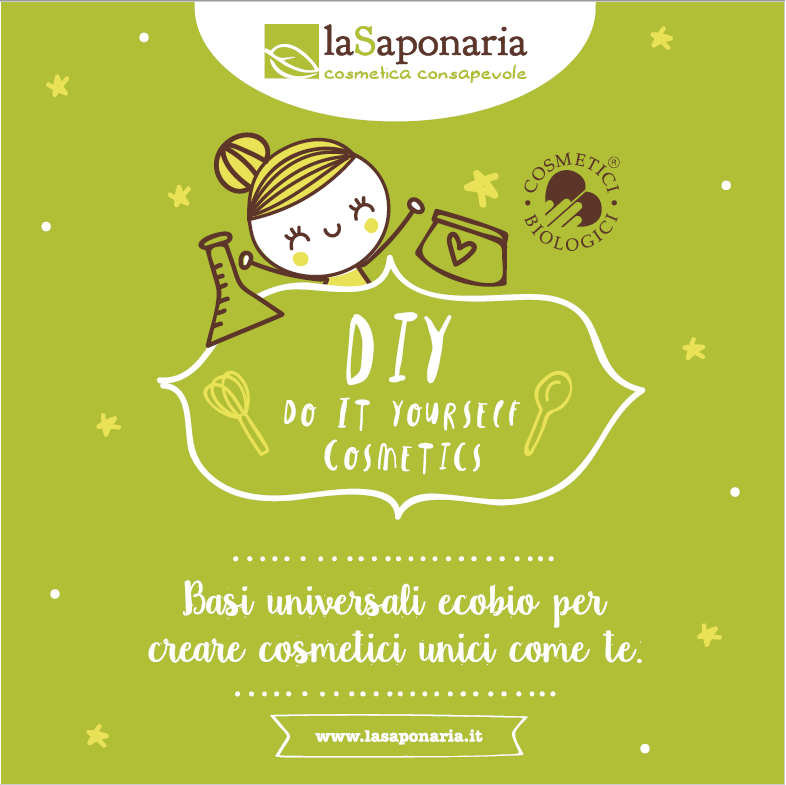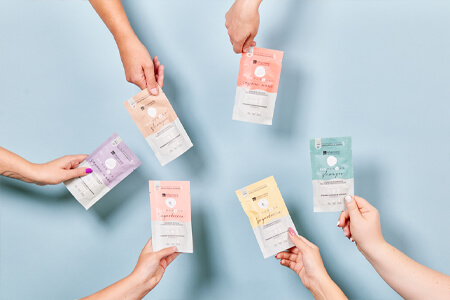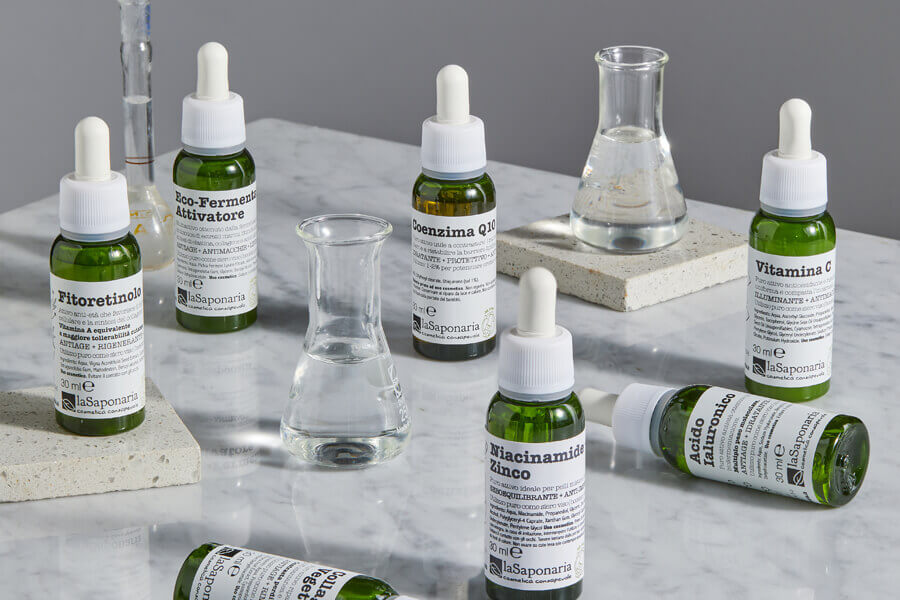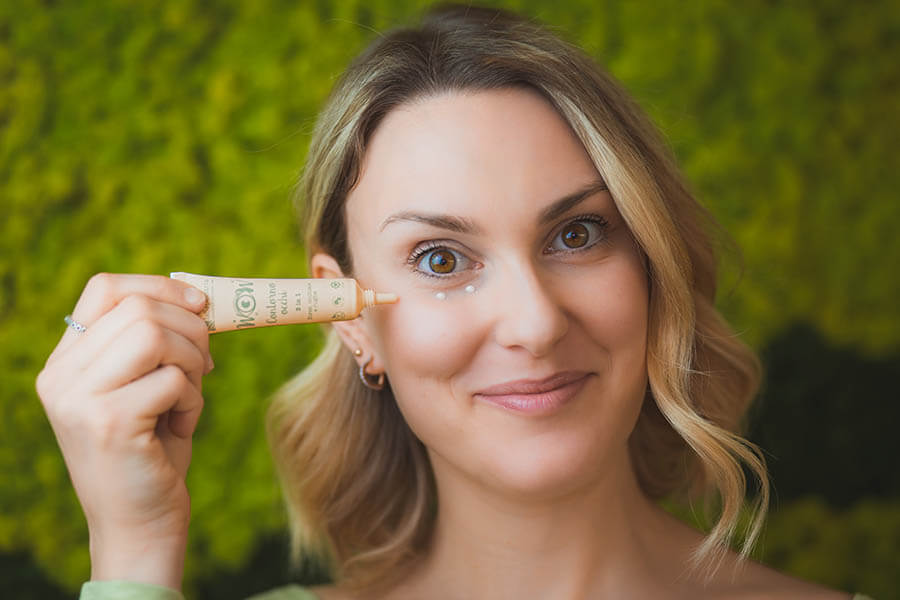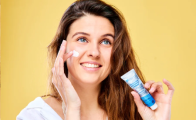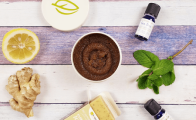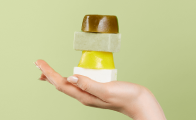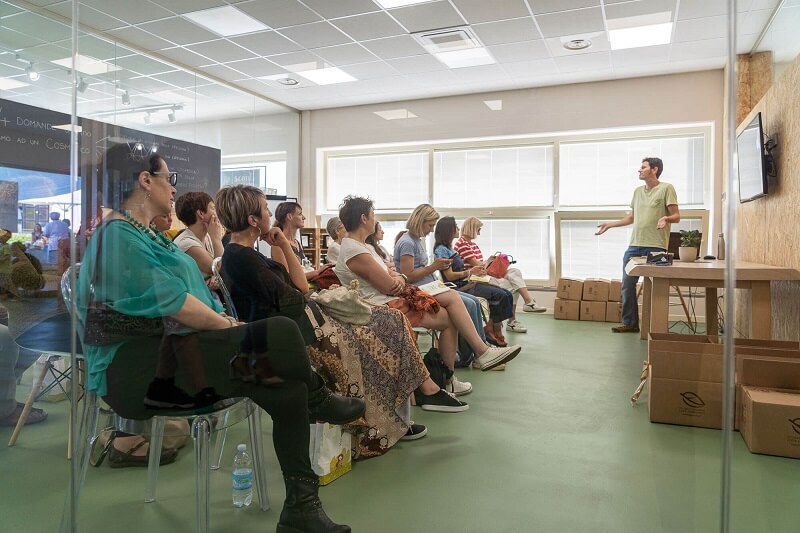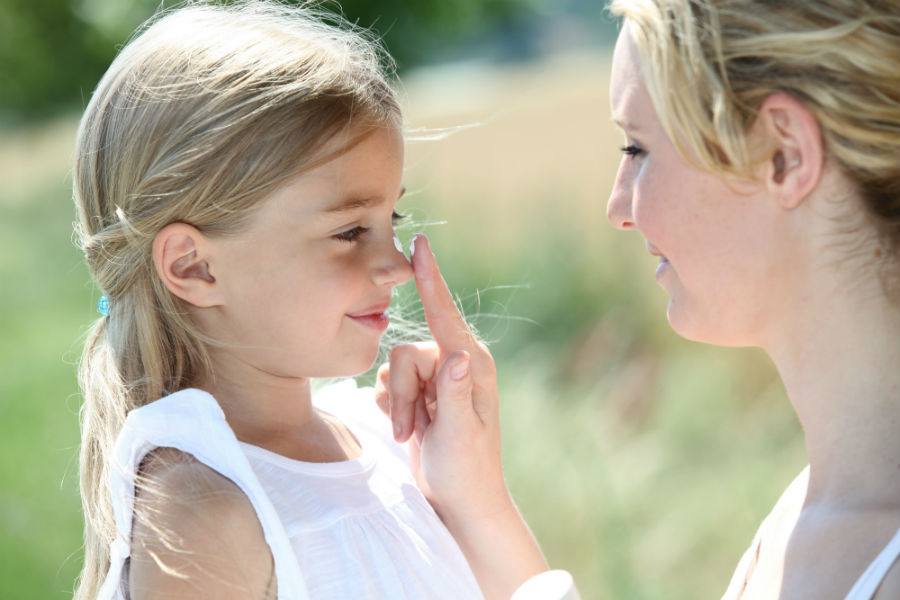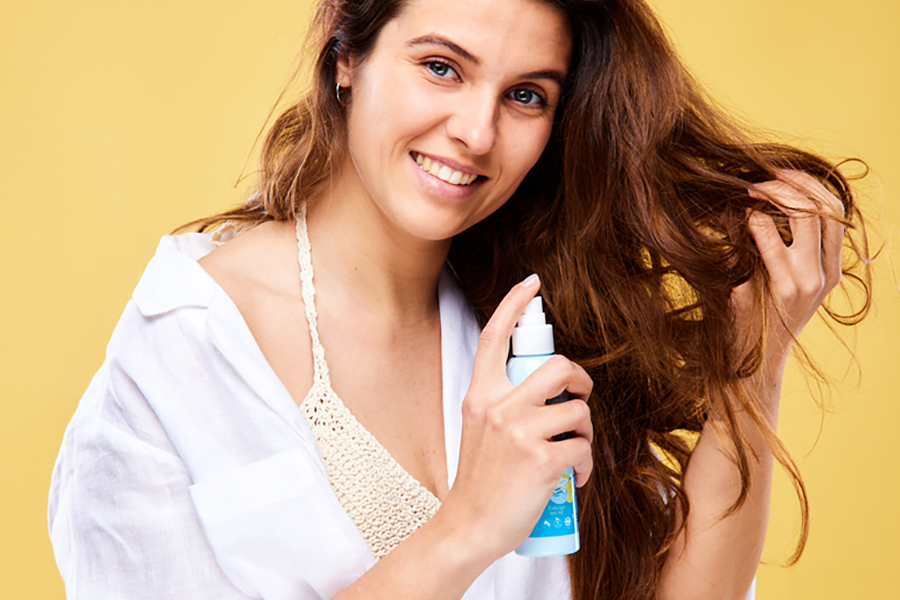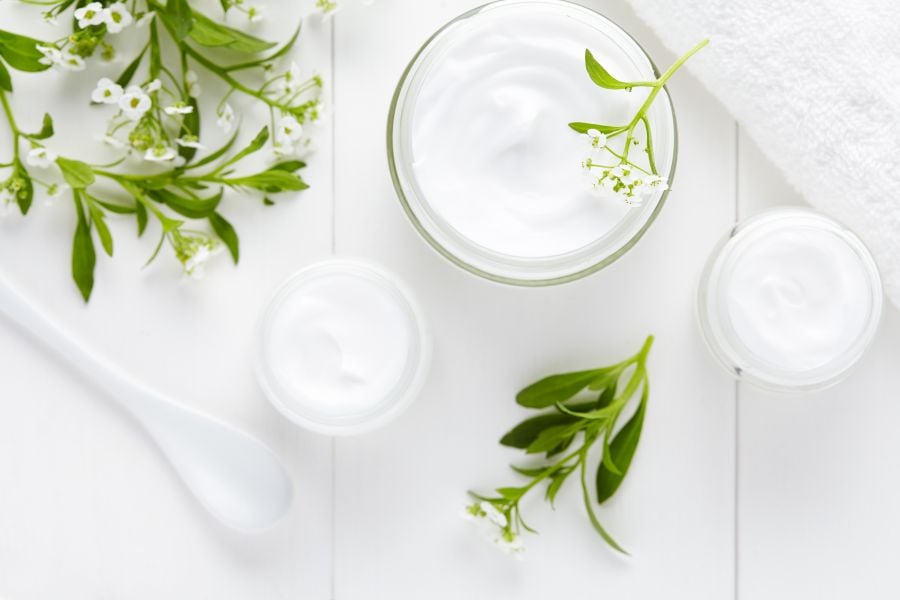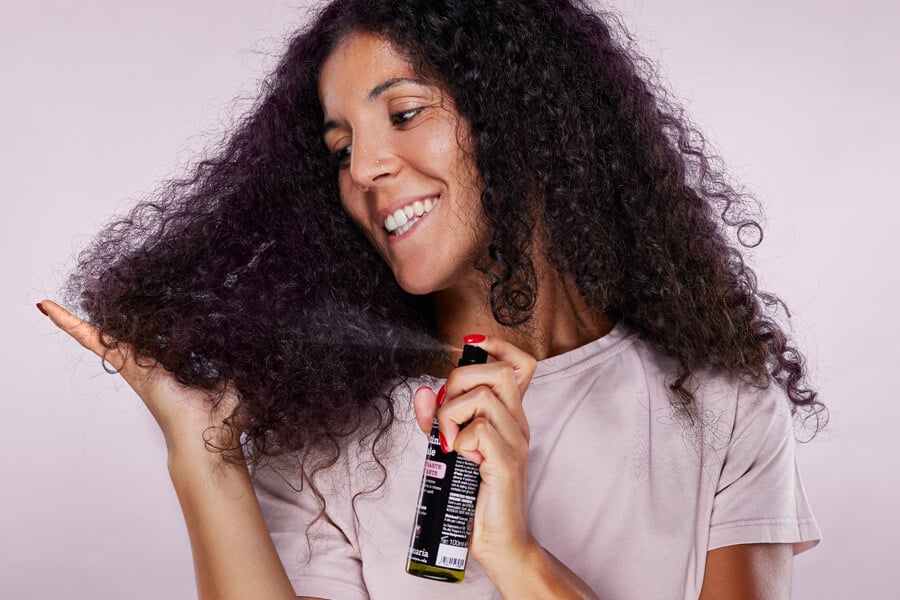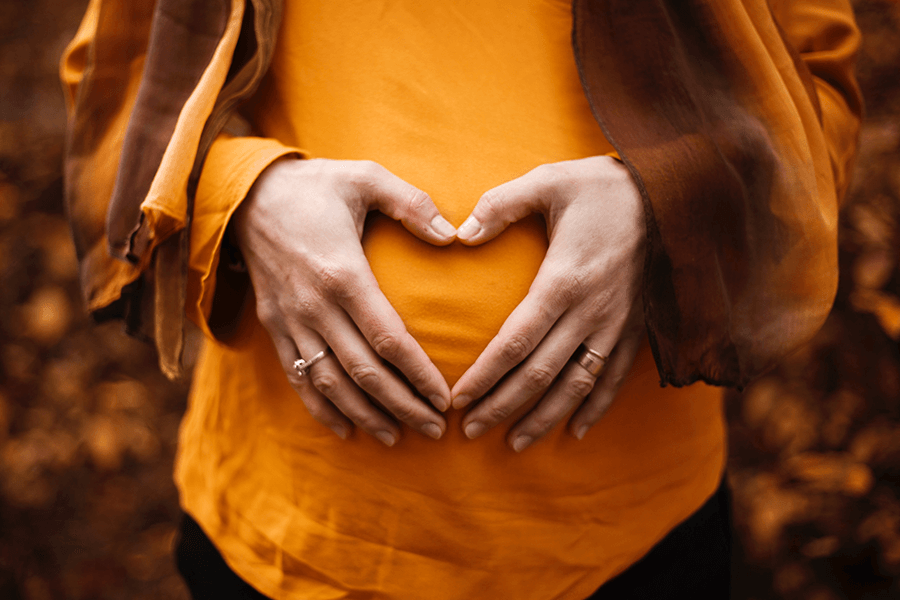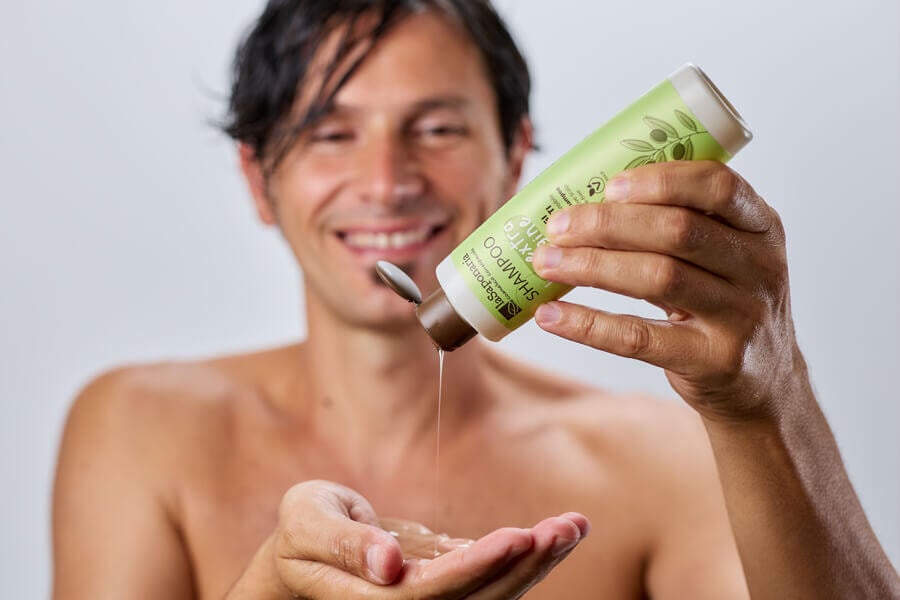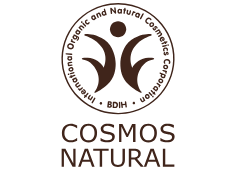The insights of La Saponaria
How to protect babies and children at the beach or in the mountains: the organic sunscreen for the little ones
Summer is the perfect time to spend time outdoors with our little ones, whether it's a day at the beach or a trip to the mountains. However, it is important to remember that the skin of babies and children is particularly sensitive to the sun's rays, and sunscreen is essential to preserve its health. But which one to choose? How to orient yourself?
What is the best sunscreen for infants? And for children? Are there any organic and safe alternatives? Yes! In this article, we will explore the importance of protecting the skin of the little ones from the sun, and we will discover the features and benefits of organic sunscreens for infants and children:
The delicate skin of infants and children
What is the best sunscreen for infants?
Sunscreens for children and infants: pay attention to SPF
Sunscreens for children and infants: choosing between physical or chemical filters
Sunscreens for children and infants: other features and tips
The importance of application
An ideal sunscreen for infants and children? It must be water-resistant
Infants and young children? Better in the shade
Osolebio: the organic sunscreen for children and infants
Conclusion: the organic sunscreen for children and infants
The delicate skin of infants and children
The skin of babies and children is very delicate and more vulnerable to damage caused by UV rays. This is because, unlike adult skin, the skin of babies and children in general is thinner, has less melanin, the pigment that gives protection from the sun's rays, and the skin's natural defense system is still developing. . These factors increase the risk of sunburn, rashes and long-term damage such as premature aging and the risk of developing skin problems, such as melanoma, in adulthood. Properly protecting their sensitive skin is essential to ensure their safety and health in the short and long term.
What is the best sunscreen for infants?
When it comes to choosing sunscreen for your newborn babies, we want to be clear and explore the topic as much as possible. Of course it is important to consider several characteristics and factors. First, we need to make sure that the sunscreen is specifically for babies and children so that it fits their unique needs.
Sunscreens for children and infants: pay attention to SPF
The ideal baby sunscreen should have SPF 50. SPF is the acronym for "Sun Protection Factor", which in Italian means "Sun Protection Factor". SPF is a number that indicates the ability of a sunscreen to protect the skin from the sun's UVB rays. UVB is the sun's rays responsible for sunburn and can contribute to the risk of skin cancer.
The SPF indicates how much longer a person can stay in the sun without burning compared to how long it would be without the protection of sunscreen. For example, if a person without sunscreen begins to burn after 10 minutes of sun exposure, applying a sunscreen with SPF 30 should theoretically allow that person to stay in the sun without burning for about 300 minutes (that is, 10 minutes x 30).
However, it is important to keep in mind that the SPF not only indicates the protection time, but also the level of protection from UVB rays. Here is a quick guide to better understanding the SPF:
- SPF 15: Provides 93% UVB protection, allowing the skin to stay in the sun without burning for approximately 150 minutes.
- SPF 20: Provides 95% UVB protection, allowing the skin to stay in the sun without burning for approximately 200 minutes.
- SPF 30: Provides 97% UVB protection, allowing the skin to stay in the sun without burning for approximately 300 minutes.
- SPF 50: Provides 98% UVB protection, allowing the skin to stay in the sun without burning for approximately 500 minutes.
Importantly, no sunscreen offers total protection from UV rays. So even with the use of a high-protection sunscreen, it's wise to limit sun exposure during peak hours, wear protective clothing such as hats and sunglasses, and seek shade whenever possible.
It's also important to remember that the SPF only refers to UVB protection and does not provide information about protection from UVA rays, which can cause long-term damage to your skin such as premature aging and increased risk of skin cancer. Therefore, it is advisable to choose a broad spectrum sunscreen, which offers protection from both UVB and UVA rays.
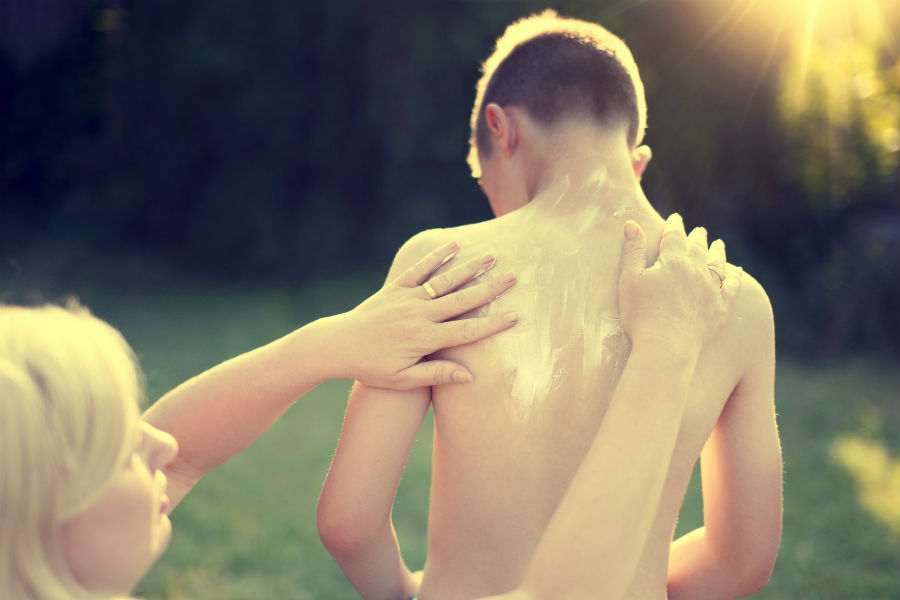
Sunscreens for children and infants: choosing between physical or chemical filters
Here is our beautiful baby, with his delicate pink skin: having ascertained that we want to protect it with the maximum protection factor available, which cream should we choose now? In fact, we know that sunscreens differ in sunscreens with chemical filters and sunscreens with physical filters. Organic sunscreens are from this second family. To learn more about this topic you can read this article on our blog.
Here we briefly mention that traditional sunscreens often contain a number of ingredients which, while they may be effective in protecting against UV rays, can also be irritating to children's sensitive skin. Specifically, chemical sunscreens can cause allergies or adverse reactions on the delicate skin of infants and children. Additionally, some chemicals found in traditional sunscreens have been the subject of concerns for their potential impact on human health and the marine environment. They are in fact investigated as possible endocrine disruptors and have been banned in some countries such as Palau or Hawaii because they are harmful to the coral reef as well as polluting the seas from different points of view. As a result, more and more parents are looking for safer and more natural alternatives.
That's why organic sunscreens for babies and children based on physical filters offer a safe and effective solution to protect their delicate skin from damage from the sun's rays. These products are formulated with natural and organic ingredients, they use mineral filters, such as zinc oxide or titanium dioxide, which create a physical barrier on the skin. Therefore, in addition to the ingredients that are very well tolerated by all skin types, even the delicate one of infants or young children, it is precisely the protection method that makes these creams more suitable for sensitive skin: while in fact chemical sunscreens absorb UVB rays and create a reaction that does not burn the skin, the mineral filters reflect them. Also in this case, to learn more, refer to the article Sun creams: what is the difference between chemical and physical sun filters?

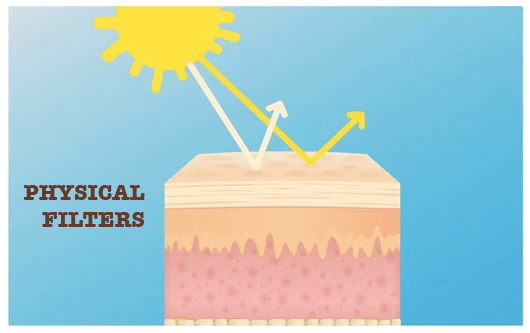
Sunscreens for children and infants: other features and tips
In addition to being delicate on the skin and not containing aggressive ingredients, sunscreen for babies and children should not contain artificial perfumes, dyes or chemical preservatives which can irritate the sensitive skin of the little ones, especially newborns. Instead, opt for organic and natural products that use soothing ingredients such as aloe vera, chamomile oil or shea butter to keep the skin hydrated and protected.
The importance of application
As we know, it is very important to apply sunscreen correctly to get the desired protection. It is always best to consult the specific instructions on the packaging of sunscreens and to follow the guidelines. In general, however, it is advisable to apply a generous and uniform amount of sunscreen on all exposed areas of the body, at least 15-30 minutes before sun exposure, and to reapply it every two hours or after each bath.
An ideal sunscreen for infants and children? It must be water-resistant
It is very important to choose a sunscreen for babies and children that is water-proof or water-resistant. In fact, children often spend a lot of time in the water during their days at the beach, and only in this way will we be able to ensure that they have continuous protection even after contact with water. In general, however, it is always good to reapply sunscreen after each bath or every two hours, to ensure optimal protection.
Infants and young children? Better in the shade
When we find ourselves dealing with newborns we must make sure to spread sunscreen well all over the body and also cover the ears, neck and scalp using a wide-brimmed hat or a protective headband. Small children in general must stay in the shade and avoid exposure to the sun in the central hours of the day. It's also vital to pay attention to signs of sunstroke, such as redness or irritation, and seek out a shaded area immediately if you notice any symptoms. For younger children it is always advisable to use sunglasses and light long-sleeved clothing to reduce direct exposure to the sun during peak hours.
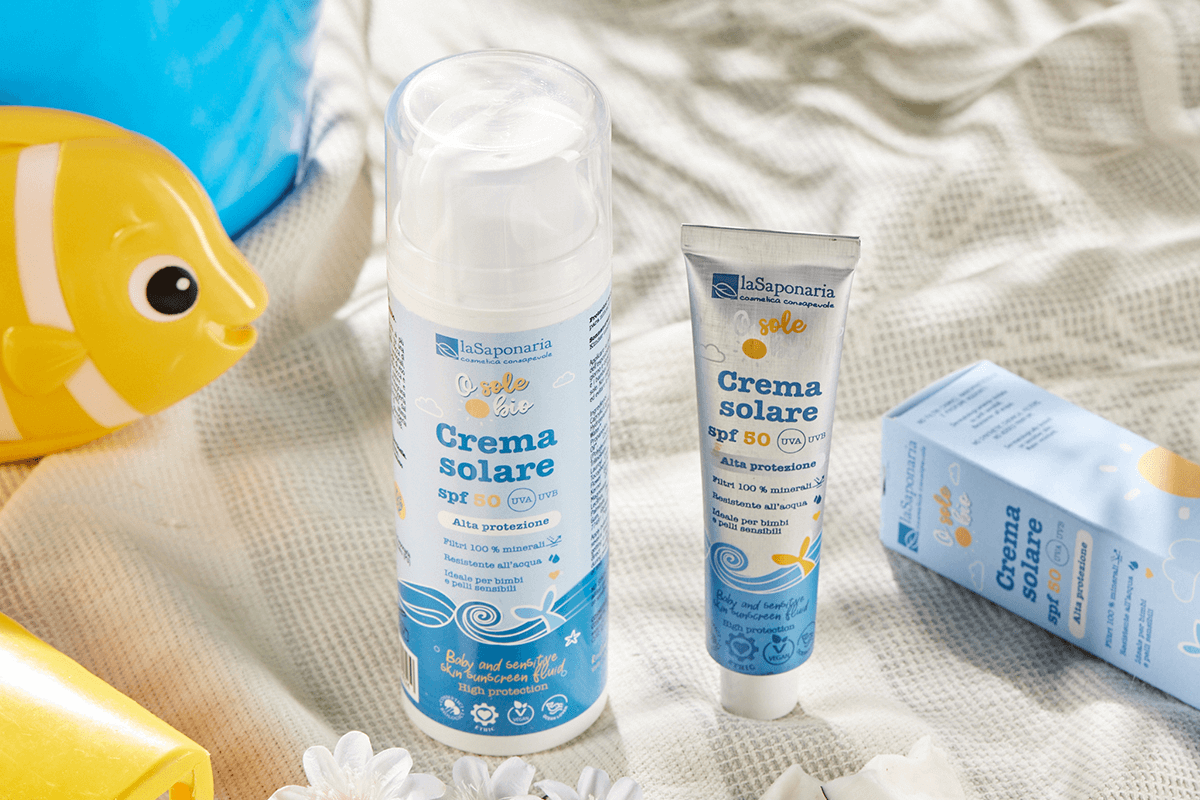
Osolebio: the organic sunscreen for children and infants
La Saponaria has formulated the SPF 50 sun cream - Children and sensitive skin, a high protection sun cream with SPF 50 ideal for children, babies and sensitive skin. Perfect for fair to medium skin and for the first days of sunshine, it is rich in nutrients and functional substances, effectively hydrates and protects the skin of the face and body, promoting an even, golden tan.
Its main features are:
- It is an organic sunscreen for children and babies, it contains soothing ingredients such as sunflower and natural bisabolol to nourish the skin, vitamin E, pomegranate and gamma oryzanol to protect it from oxidative stress caused by the sun and natural mineral filters to naturally defend it from UVA and UVB.
- The physical filters with which it is formulated are 100% NON NANO minerals. The use of NANO physical sunscreens, i.e. ones so small that they can penetrate the skin, has been the subject of debate and concern in recent years. This aspect can also be explored in the article Sun creams: what is the difference between chemical and physical sun filters?
- It has a light texture, is easily applied without leaving a white trail and makes the skin soft and velvety: this is a fundamental aspect when we are dealing with babies and children, who are often very impatient when we apply sunscreen to them! It is therefore better to opt for a simple cream to spread and to spread again during the day.
- It is water resistant, so as to protect our children even while they are bathing in the sea
- It is without added perfume, precisely to make it as suitable as possible for the skin of the very young
- It is dermatologically tested for sensitive skin
Conclusion: the organic sunscreen for children and infants
In conclusion, when it comes to protecting babies and children at the seaside or in the mountains, choosing a suitable sunscreen is essential to preserve their delicate skin from harmful UV rays. Let us therefore remember to consider several factors, including the presence of physical sunscreens, suitability for use on newborns, water resistance and the delicacy of the ingredients, as we find in the SPF 50 sunscreen - Children and sensitive skin with filters physical 100% NON NANO minerals. With its organic and natural formulation, free from artificial fragrances, dyes or aggressive preservatives, this sunscreen offers an ideal solution to protect the little ones from damage caused by the sun and spend happy days outdoors protected and pampered together.

Written by Simona
She is La Saponaria’s digital writer: always juggling a newsletter to send and a blog article to publish, she lovingly takes care of our social media channels and our e-commerce.



